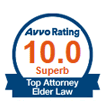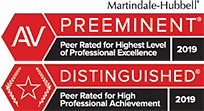
Veterans and their families should be aware of the various benefits that may be available to them through the United States Department of Veterans Affairs (“VA”).
GENERAL HEALTH SERVICES AND OTHER PROGRAMS
The VA offers many special programs for veterans, among which are the following:
- Benefits for returning veterans: Health care for 5 years following discharge; Dental care for service-related conditions; Coordination of services for the severely ill or disabled and their families; and, Various other services, such as home loans, vocational rehabilitation and education programs
- Special programs and initiatives for homeless veterans
- Special programs to assist minority veterans in obtaining benefits
- Benefits for survivors of veterans who have died in service and after service
- Special programs for women veterans and for veteran business owners. See, the VA website, www.va.gov.
Health care is are also provided through the Veterans Health Administration branch of the VA.
MONETARY BENEFIT PROGRAMS
In addition, monetary benefit programs are available through the Veteran’s Benefits Administration branch of the VA. These monetary benefit programs are separated into benefits for (1) service-connected disabilities and (2) non-service-connected disabilities. The primary benefit for service-connected disabilities is the VA “compensation” benefit; the primary benefit for non-service- connected disabilities is the VA “pension” benefit. A veteran is prohibited from receiving compensation benefits and pension benefits concurrently. 38 U.S.C. §5304(a).
VA COMPENSATION FOR SERVICE-CONNECTED DISABILITIES:
VA “compensation” is a disability benefits program that provides monthly monetary payments to compensate veterans for service-connected disabilities. Pursuant to 38 U.S.C. §1110,
For disability resulting from personal injury suffered or disease contracted in line of duty, or for aggravation of a preexisting injury suffered or disease contracted in line of duty, in the active military, naval, or air service, during a period of war, the United States will pay to any veteran thus disabled and who was discharged or released under conditions other than dishonorable from the period of service in which said injury or disease was incurred, or preexisting injury or disease was aggravated, compensation as provided in this subchapter, but no compensation shall be paid if the disability is a result of the veteran’s own willful misconduct or abuse of alcohol or drugs.
Thus, the general eligibility requirements for VA disability compensation are: (1) that the veteran’s injury or disease was suffered or aggravated in the line of duty; (2) that the veteran was discharged or released under conditions other than dishonorable; and (3) that the disability did not result from the veteran’s own willful misconduct, or abuse of alcohol or drugs.
If the veteran is found eligible, basic benefits are paid based upon how severely the veteran is disabled, and on whether the veteran has a spouse, children or dependent parents. An additional compensation amount is given when the veteran’s spouse is determined to require Aid and Assistance.
The VA assigns a disability “rating” to the disabled veteran, using a statutory ratings schedule, based on what it calculates is the impairment of a veteran’s civilian earning capacity resulting from the disability. 38 U.S.C. §1155. The Secretary adopts “a schedule of ratings of reductions in earning capacity from specific injuries or combination of injuries. The ratings shall be based, as far as practicable, upon the average impairments of earning capacity resulting from such injuries in civil occupations.” Id. The ratings range from 0% to 100%, in increments of 10%. The veteran’s monthly compensation is based on this rating. By way of example, an eligible single veteran with no dependents would be eligible for compensation ranging from $123 per month, for a 10% disability, to $2,673, for a 100% disability.
In addition to the basic disability compensation, a “special monthly compensation” (“SMC”), with a higher compensation rate than the compensation for a 100% rating, may be available for certain severely disabled veterans. 38 U.S.C. §1114.
Dependency and Indemnity Compensation (“DIC”).
DIC is a form of compensation paid to a veteran’s surviving spouse, children and parents, where the veteran is deceased as a result of service-connected conditions. 38 U.S.C. §1310. DIC is defined as “a monthly payment made by the Secretary to a surviving spouse, child, or parent (A) because of a service-connected death occurring after December 31, 1956, or (B) pursuant to the election of a surviving spouse, child, or parent, in the case of such a death occurring before January 1, 1957.” 38 U.S.C. §1101(14).
VA PENSION BENEFITS FOR NON-SERVICE-CONNECTED DISABILITIES:
The VA pension benefit is a financial benefit that most veterans know nothing about. Yet, it is a primary source of income that elder care attorneys can help veterans receive. Incorporating VA benefits planning into a traditional elder law practice is essential as these benefits provide substantial financial support to senior veterans and their families.
Improved Pension / Special Monthly Pension (“SMP”):
The Special Monthly Pension is a disability benefits program available to compensate veterans for non-service-connected disabilities. Like the VA compensation program, the pension program is based upon disability. However, unlike the VA compensation program, the pension program is also based on income and need, and the veteran’s disability must be total and permanent (but need not be “service-connected”). The VA “improved pension” provides a “Special Monthly Pension” (“SMP”) to veterans or their widow(er)s. (Prior versions of the pension program, referred to as “Old-Law Pension” and “Section 306 Pension”, are not discussed here.)
There are three (3) types of SMP: (1) the basic pension, (2) “Housebound” benefits and (3) “Aid and Attendance” benefits.
Basic Eligibility Criteria for Basic Pension, Housebound and Aid and Attendance Benefits:
All of the following criteria must be met before a veteran or widow(er) of a veteran can receive Improved Pension benefits:
- Active Duty. The veteran must have wartime service (in general, for those entering military service before September 7, 1980, consisting of at least 90 days of active duty service, one day of which was during a war-time period.
- Wartime Service. In general, wartime is:
-
-
- World War I
- World War II: December 7, 1941 – December 31, 1946
- Korean War: June 27, 1950 – January 31, 1955
- Vietnam War: August 5, 1964 – May 7, 1975
- Gulf War: August 2, 1990 through date to be set by law by Presidential Proclamation
-
- Discharge. The veteran must have received a discharge other than dishonorable.
- Asset and Income Limits. The claimant must have limited income and assets available. 38 U.S.C. §1521 and 1522.
Income Limits. With respect to income eligibility, the person’s countable family income must be below a yearly limit set by Congress. “Countable” income includes income from most sources, including “earnings, disability and retirement payments, interest and dividends, and net income from farming or business.” Id.
However, exclusions to “countable” income include public assistance, such as Supplemental Security Income (“SSI”). Id. Although the VA presumes that a veteran’s child’s income is available to or for the veteran, it may grant an exception to this presumption in cases of hardship. Id.
By way of example, the income eligibility limit (also called the “Maximum Annual Pension Rate,” or “MAPR”) for a single veteran without children is less than $13,535. Medical expenses may be deducted from countable income if they exceed 5% of the income limit (or $676.00, for the single veteran without children). Id.
Asset Limits. Effective October 18, 2018, the VA published new regulations which imposed an asset limit, also known as a net worth limit. The new regulations also establish a look-back period and imposed penalties for asset transfers.The new rules will make qualifying for VA pension benefits more challenging than ever.
Net Worth Limit. The net worth limit is $127,061, which increases annually with inflation. For purposes of entitlement to VA pension, countable net worth includes all countable assets plus annual gross income. Example of “net worth” calculation: A claimant’s assets total $117,000 and annual income is $9,000. Therefore, adding the claimant’s annual income to assets produces net worth of $126,000.
The term “countable assets” means the fair market value of all property that an individual owns, including all real and personal property, unless excluded under the regulations, less the amount of mortgages or other encumbrances specific to the mortgaged or encumbered property. A home and lot of no more than 2 acres is not countable, as well as personal effects, including vehicles. A claimant may decrease countable assets by spending on items or services for which fair market value is received. Such purchases cannot be on any item that the VA considers to be a countable asset.
Look-Back Period on Asset Transfers. The “look-back period” refers to the 36-month period immediately preceding the date on which VA receives either an original pension claim or a new pension claim after a period of non-entitlement. This look-back period does not include any date before October 18, 2018, or 30 days after September 18, 2018, the date the new VA rules were published in the Federal Register.
Penalty Periods. The “penalty period” means a period of non-entitlement for VA pension benefits due to the transfer of an asset.
Penalty periods and calculations. When a claimant transfers an asset during the look-back period, the VA will assess a penalty period, not to exceed 5 years. However, in calculating penalty periods, the VA will disregard asset transfers made before October 18, 2018.
The length of the penalty period is calculated by dividing the value of the transferred asset by the monthly pension rate for a veteran in need of aid and attendance with one dependent that is in effect as of the date of the pension claim, currently $2,169.00. The result is the number of months during which VA will not pay pension benefits. The penalty period begins on the first day of the month that follows the last asset transfer. Only the portion of assets that would make the net worth exceed $127,061 are subject to penalty.
(Additional information about the new VA regulations and a copy of the Federal Register in which the new VA regulations were published were posted in a prior blog post.)
- Aged or Disabled.The claimant must be over age 65, or have a permanent and total disability at the time of application.
A person is considered “permanently and totally disabled” if the person is any one of the following:
- A patient in a nursing home for long-term care because of disability.
- Disabled, as determined by the Commissioner of Social Security for purposes of any benefits administered by the Commissioner.
- Unemployable as a result of disability reasonably certain to continue throughout the life of the person.
- Suffering from–
(A) any disability which is sufficient to render it impossible for the average person to follow a substantially gainful occupation, but only if it is reasonably certain that such disability will continue throughout the life of the person; or
(B) any disease or disorder determined by the Secretary to be of such a nature or extent as to justify a determination that persons suffering therefrom are permanently and totally disabled. 38 U.S.C. §1502(a).
(1) Basic Pension:
The pension is a monthly benefit paid to veterans (or eligible surviving spouses 38 U.S.C. §1541) who have limited or no income. A veteran cannot receive both a pension and service-related compensation simultaneously; if the veteran is eligible under both programs, the VA will pay whichever of the two benefits is the greater amount.
According to the Department of Veterans Affairs website, pension “is a benefit paid to wartime veterans who have limited or no income, and who are age 65 or older, or, if under 65, who are permanently and totally disabled.” Id. “Pension” is defined in the United States Code as “a monthly or other periodic payment made by the Secretary to a veteran because of service, age, or non-service-connected disability, or to a surviving spouse or child of a veteran because of the non-service-connected death of a veteran.” 38 U.S.C. §101(15).
In addition to the basic pension, more severely disabled veterans may also qualify for Aid and Attendance or Housebound benefits. Aid and Attendance and Housebound benefits are not available to those who are not eligible for the pension. Although Aid and Attendance and Housebound benefits are available in addition to the basic pension, a veteran cannot receive both Aid and Attendance and Housebound benefits concurrently.
The Improved Disability Benefits Pension Rate Table reflects MAPR rates that vary, depending not only on dependents, but also on whether the veteran qualifies for Aid and Attendance and/or Housebound benefits. Thus, the annual income limit (which is also the amount from which a veteran’s countable income is deducted in order to calculate the veteran’s benefit amount) is higher for Housebound benefits than for the regular pension; the annual income limit for Aid and Attendance is the highest of the three rates. Id.
(2) Housebound Benefits:
Housebound benefits are paid in addition to the monthly pension for a veteran (or eligible surviving spouse 38 U.S.C. §1541) who qualifies for the pension and who:
- has a total permanent disability and, as a result, is permanently and substantially confined to his/her premises; or
- has a total permanent disability plus another disability or disabilities that are 60% or more disabling.
The requirement of being “permanently housebound” is met where the veteran “is substantially confined to such veteran’s house (ward or clinical areas, if institutionalized) or immediate premises due to a disability or disabilities which it is reasonably certain will remain throughout such veteran’s lifetime.” 38 U.S.C. §1502(c).
Once housebound eligibility is established, the monthly pension amount is calculated as the difference between the veteran’s countable family income and the annual pension limit (the MAPR), which limit is increased above the regular pension rate for those eligible for housebound benefits, payable in monthly installments.
Permissible family income limits as of December 1, 2018 to receive household benefits are:
- Housebound veteran with no dependents, $1,378/month, $16,536/year.
- Housebound veteran with one dependent, $1,727/month, $20,724/year.
- Housebound widow(er) with no dependents, $924/month, $11,088/year.
(3) Aid and Attendance Benefits:
Aid and Attendance (“A&A”) is a benefit that is paid in addition to the monthly pension. A&A is available to a veteran (or eligible surviving spouse 38 U.S.C. §1541) who qualifies for the pension and who:
- is bedridden, or
- requires the aid of another person to perform activities of daily living, or
- is a nursing home resident, as a result of mental or physical incapacity, or
- is blind or nearly blind in both eyes.
A person is considered in need of regular aid and attendance if the person is “(1) a patient in a nursing home or (2) blind, or so nearly blind or significantly disabled as to need or require the regular aid and attendance of another person.” 38 U.S.C. §1502(b).
Once A&A eligibility is established, the monthly pension amount is calculated as the difference between the veteran’s countable family income and the annual pension limit (the MAPR), which limit is increased above the regular pension and housebound rates for those eligible for A&A benefits, payable in monthly installments.
The permissible family income limits as of December 1, 2018 to receive Aid and Attendance benefits are:
- Veteran with no dependents, $1,881/month, $22,572/year.
- Veteran with one dependent, $2,230/month, $26,760/year.
- Widow(er) with no dependents, $1,209/month, $14,508/year.
CONCLUSION
A aged or disabled veteran or widow(er) of a veteran with low income and resources who needs additional health care should apply for all VA benefits for which he/she may be entitled. The additional benefits paid by the VA may allow the recipient to stay at home or in assisted living facility and avoid going to a nursing home. The VA benefits can also help the healthy spouse maintain the same standard of living and quality of life he or she enjoyed before the disabled spouse became ill.
For additional information concerning VA compensation and pension benefits, visit:
For additional information concerning NJ elder law and special needs planning visit:
Categories
- Affordable Care Act
- Alzheimer's Disease
- Arbitration
- Attorney Ethics
- Attorneys Fees
- Beneficiary Designations
- Blog Roundup and Highlights
- Blogs and Blogging
- Care Facilities
- Caregivers
- Cemetery
- Collaborative Family Law
- Conservatorships
- Consumer Fraud
- Contempt
- Contracts
- Defamation
- Developmental Disabilities
- Discovery
- Discrimination Laws
- Doctrine of Probable Intent
- Domestic Violence
- Elder Abuse
- Elder Law
- Elective Share
- End-of-Life Decisions
- Estate Administration
- Estate Litigation
- Estate Planning
- Events
- Family Law
- Fiduciary
- Financial Exploitation of the Elderly
- Funeral
- Future of the Legal Profession
- Geriatric Care Managers
- Governmental or Public Benefit Programs
- Guardianship
- Health Issues
- Housing for the Elderly and Disabled
- In Remembrance
- Insolvent Estates
- Institutional Liens
- Insurance
- Interesting New Cases
- Intestacy
- Law Firm News
- Law Firm Videos
- Law Practice Management / Development
- Lawyers and Lawyering
- Legal Capacity or Competancy
- Legal Malpractice
- Legal Rights of the Disabled
- Liens
- Litigation
- Mediation
- Medicaid Appeals
- Medicaid Applications
- Medicaid Planning
- Annuities
- Care Contracts
- Divorce
- Estate Recovery
- Family Part Non-Dissolution Support Orders
- Gifts
- Life Estates
- Loan repayments
- MMMNA
- Promissory Notes
- Qualified Income Trusts
- Spousal Refusal
- Transfers For Reasons Other Than To Qualify For Medicaid
- Transfers to "Caregiver" Child(ren)
- Transfers to Disabled Adult Children
- Trusts
- Undue Hardship Provision
- Multiple-Party Deposit Account Act
- New Cases
- New Laws
- News Briefs
- Newsletters
- Non-Probate Assets
- Nursing Facility Litigation
- Personal Achievements and Awards
- Personal Injury Lawsuits
- Probate
- Punitive Damages
- Reconsideration
- Retirement Benefits
- Reverse Mortgages
- Section 8 Housing
- Settlement of Litigation
- Social Media
- Special Education
- Special Needs Planning
- Surrogate Decision-Making
- Taxation
- Technology
- Texting
- Top Ten
- Trials
- Trustees
- Uncategorized
- Veterans Benefits
- Web Sites and the Internet
- Webinar
- Writing Intended To Be A Will







Vanarelli & Li, LLC on Social Media